Amazing Backyard Palapa Ideas For A Tropical Feel

Palapas are now frequently used in backyards as a covered area to relax and hang out. Putting them in the backyards of residential areas brings back memories of those who have spent time in palapas while at a resort on vacation. The word palapa comes from the Spanish word ‘Tagalog,’ which means ‘petiol of the palm leaf, which is a great description of it. As the origin of the name may suggest, palapas are common on the beaches and deserts of Mexico and are an important architectural element in Western Mexican cultures.
What Is A Palapa?
A Palapa is a structure that is open on all sides with a covered roof. These are typically small and are made of natural materials. While they are usually small, they do not have to be; they could sometimes be super intricate. Palapas have a roof that is made from dried palm leaves, and natural poles hold the roof in place. The leaves are thatched together to make the roof. This makes the building extremely suitable for warmer weather and locations. Areas such as Western Mexico, Florida, Texas, and California are the most common for backyard palapas to be built.
Palapa Designs
There are many different palapa designs to choose from. One of the more popular ideas include structures built above a swimming pool to provide shade on hot days. Another idea is to use them as a tiki bar for entertaining guests.
One thing is for sure is that a palapa can give your backyard the tropical ambiance you want for your outdoor space. – interior designer Savannah
Here, we share our best backyard palapa ideas.
Palapa covered porch – A home’s porch often has an extended roof canopy that provides shelter for a table and chairs. The thatched-roof structure provides a tropical or beach setting that is further enhanced by tropical palms and coastal style decor.
DIY backyard cabana – DIY palapas can be constructed using a kit or by purchasing a bamboo pole and dried palm leaves to create your own design.
Backyard palapa kit
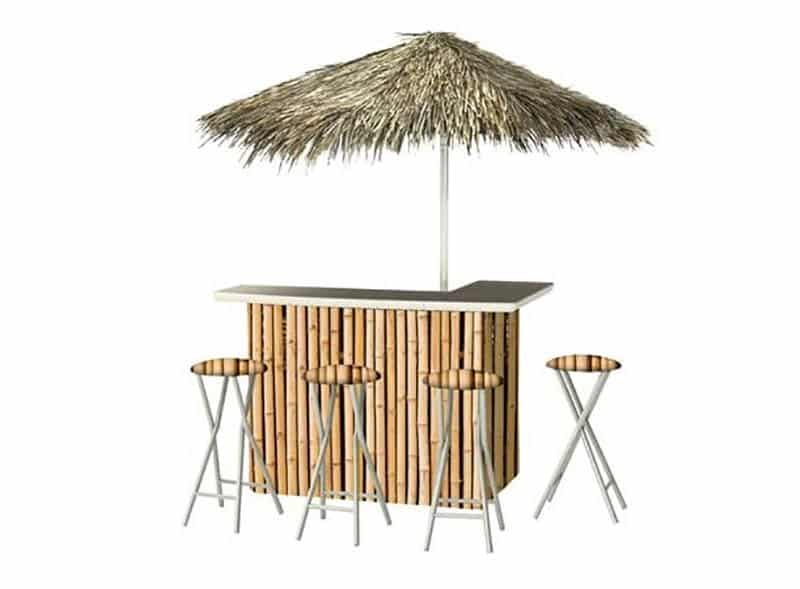
Palapa with curtains – A backyard sitting area is an excellent place to create a shade structure with an outdoor dining set. By attaching curtains, you can adjust the level of sunlight the areas get in the morning and evening, making it more comfortable for outdoor dining any time of day.
Swimming Pool with cabana and outdoor kitchen – To provide shade for the area, a large thatch roof structure provides shelter from the direct sun and makes it more comfortable to relax after sunbathing.
Rustic pavilion with swinging bench and ocean views – A rustic gazebo design could have its wood structure just as easily thatched to get the same effect.
Palapa by the pool next to sun tanning island

Hot tub palapa – A shelter over the pool’s built-in spa is not for everyone as it can hinder star gazing at night. However, for those looking to create more privacy and shade from the sun may find a tropical-themed canopy overhead the perfect backyard addition.
Palapa with fire pit – A fire pit can be a great place to gather during the day or night. See more pergola fire pit designs here.
How Much Does A Palapa Cost?
Depending on the size, shape, and materials for palapas, they do not need to be ridiculously expensive but can be more elaborate and rack up some extra dollars. Palapas can range from $750 to $5000 on a standard scale. On a custom scale, they could run from $2000 to $50,000 in certain locations. Upgrades could be anything from custom staining or coloring, type of roof thatching, how many posts are needed to hold the roof up, etc.
Additionally, there can be different supports that may be needed or furniture accessories that may be wanted. The size of the structure determines how many supports it will need. These can be made of wood, metal, or any other material you desire. This selection determines the pricing. With wood supports, you have the option to get different carvings or engravings to spice the environment up a little bit.
As a way to save a few bucks, getting local materials can save on shipping costs and also are better for the environment. Other ways to save money are to shrink the size or remove some of the added luxuries. Different unique qualities can be removed to keep the prices down.
How To Build A Palapa Roof
Building a palapa roof requires the action of thatching the roof. Thatching is a fancy word for weaving palm leaves together. This does not only need to be done with palm leaves, but there are many different types of plant leave the thatching process can be done with.
There is a special tool to use called a legget, which is sort of a spade that helps weave the leaves together. Once they are all put together, the edges will be trimmed into a straight or wavy pattern as desired. The tighter and better the weave means, the more durable the roof will be. The more layers that are added also add to the durability and longevity.
Often the first level is the first to deteriorate, so that layer can be later removed and replaced. This is done in the same way that the rest of the roof is made.
How Long Does A palapa Roof Last?
Most palapa roofs can typically last anywhere from 4 to 10 years. The weather and overall environment change the life of the thatch roof. The level of craftsmanship and quality of the materials are also large factors in the lifetime of the roof. Humidity, along with rain and wind, bring a great deal of wear and tear to the roof’s thatching, sending it to the lower end of the lifetime wheel. Often, the top layer is the worst off and can be the only part that is replaced, giving it a longer time to live.
Taking care of them and cleaning the roof and supports as needed also make a huge difference in the length of life of the buildings. Certain products, such as African Reeds last typically about 5 to 12 years, while Mexican Palm lasts about 2 – 8 years, and Tahiti is about 5 to 10 years. There are also versions of palapas with roofs that are synthetic and have the capability of lasting for 20 or more years. For those who want a more permanent roof structure, a backyard pavilion with a solid roof may be a better investment.

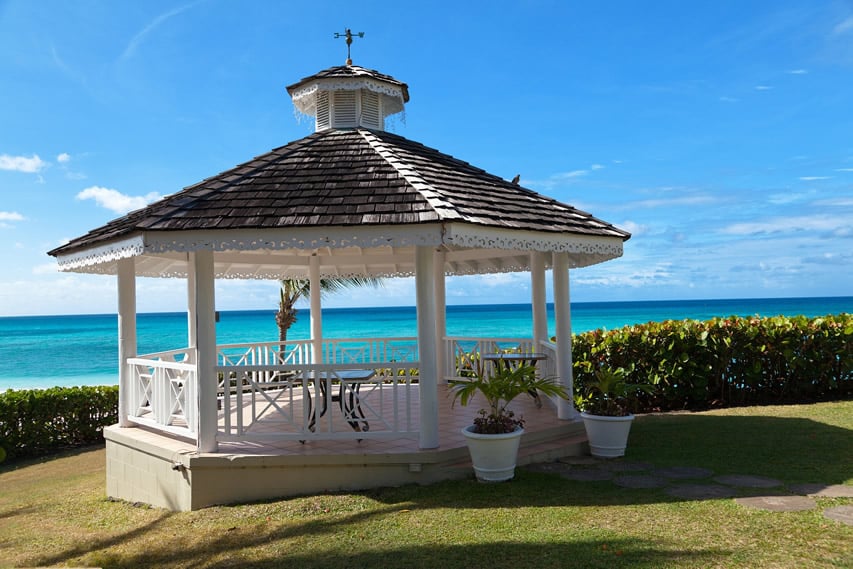
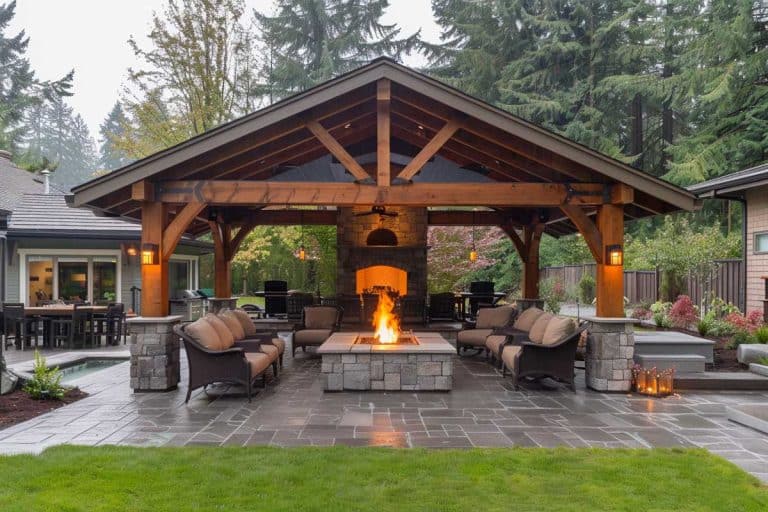
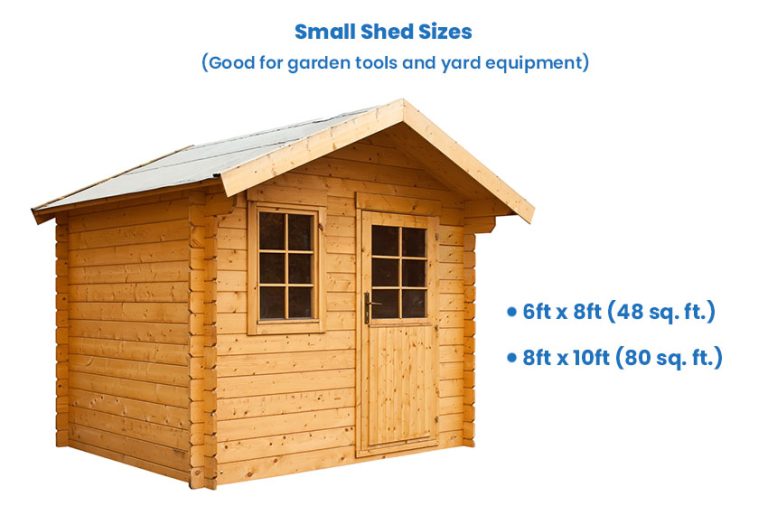
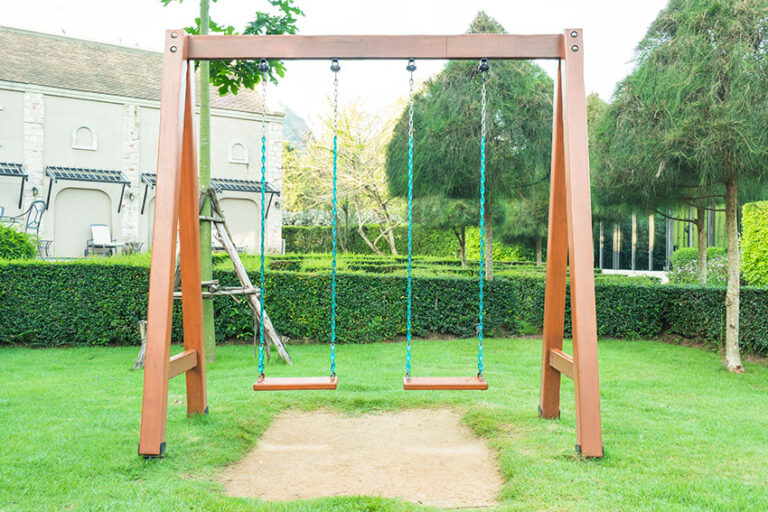
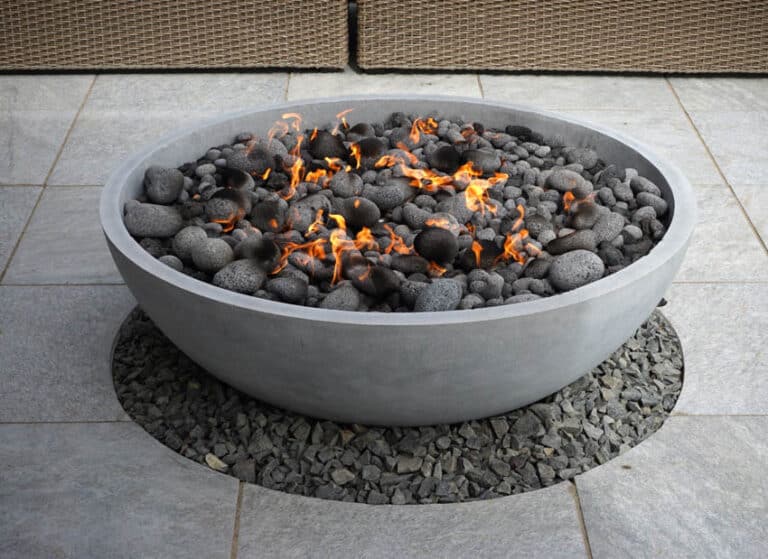
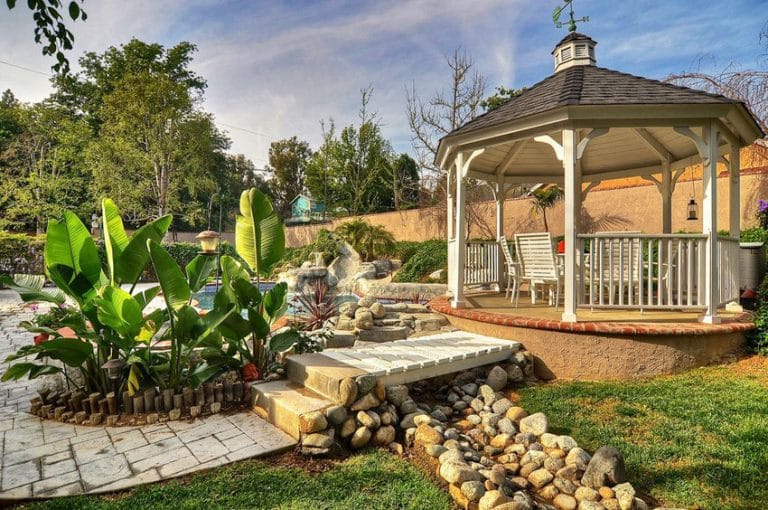
I have a pergola… but would like a palapa roof on it…
Do you have designs on that ?
We are interested in building a custom palapa in our backyard. We are located in Northern California. Who can we talk to about getting one installed?